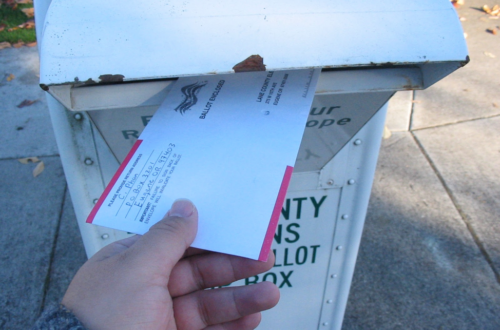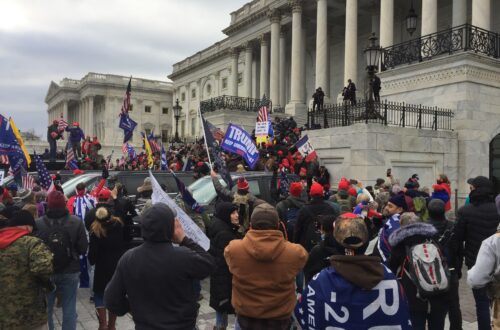President Joe Biden’s student debt relief plan is estimated to remove $230 billion from the $1.73 trillion total U.S. student loan debt, and about half of borrowers are eligible to have their entire student debt balance removed.
Florida students represent the fifth highest average debt in the nation, sitting at $38,459 per person, and the White House estimates that over 2.4 million Floridians are eligible for relief. This raises questions about the affordability of college for the average Floridian, especially as forms of aid such as Pell Grants fail to meet the rising cost of tuition and room and board.
In concert, the total amount of U.S. student debt has more than tripled since 2005.
While most people are fixated on the $10,000 that will be forgiven for most borrowers and $20,000 to Pell Grant recipients, the program includes a broad range of separate benefits. These include a 50% cut in minimum monthly payments, shorter repayment terms towards forgiveness, a $2,175 boost to Pell Grants and most significantly, a complete waiving of interest for those that meet their minimum payments.
In Florida, this has been the subject of debate among local residents, elected representatives and economists.
A Miami poll found that public opinion is split almost evenly. While 36% of people said the $10,000 cancellation goes too far, 35% approve of the amount and 30% think it’s not enough.
Gov. Ron DeSantis has harshly criticized the policy as “very unfair” and in a joint letter from GOP governors remarked that the bill “rewards the rich and punishes the poor.” Democratic gubernatorial candidate Charlie Christ has shown support, calling it an “[effort] to uplift working Floridians and lighten their load.”
Although stated in less emotionally charged terms, economists disagree on similar bases. There are three main criticisms of Biden’s proposal.
A regressive transfer of wealth is one issue of those criticizing the move, which means it financially benefits those who are more well-off. Higher educational attainment is one of the most significant contributing factors to higher income. As such, critics reason that it is unfair to essentially give a $10,000 check to tomorrow’s highest earners.
While it’s true that holding a bachelor’s degree correlates with higher earnings, others will point to the fact that the program targets relief in a way that excludes high earners — individuals who make more than $125,000 or married couples who make more than $250,000 will receive no aid. There are also popular programs presently that subsidize the activities of those better off in society, including subsidized mortgage loans for homeowners.
Another criticism of the program is the fear that such a large stimulus will increase consumer spending, contributing to even more inflation in an already hot economy. However, analysts at Goldman Sachs and other forecasters say that student loan forgiveness is unlikely to lead to a significant surge in inflation.
While canceling debt may be the same as handing out money in an accounting sense, it is unlikely to have the same effect on consumer’s behavior. Likewise, student loan forgiveness coincides with the end of the student loan repayment moratorium, which should offset most of the inflationary pressures.
Lastly, there is the criticism of the program as a band-aid solution to a more structural program. Using current Department of Education estimates, the Committee for a Responsible Federal Budget found that student debt will likely return to previous levels within five and a half years.
However, this fails to consider that Biden’s plan is administered through executive order, which does not have the latitude to create a comprehensive solution to student debt. It is likely intended as a “band-aid solution” until congress passes more substantive legislation.
It is also important to note that the issue of higher education itself has recently become a partisan divide. Democrats have maintained a mostly positive view of college since 2012 with about 67% positive and 19% negative. Compared to this, Republicans are almost reversed at 33% positive and 59% negative as of 2009. These numbers may only become more stark with increasing political dialogue about the state of education.
This raises reasonable doubts about whether opposition to student debt relief is motivated by the belief that higher education is a consumption choice not worth subsidizing rather than a disagreement about the substance of the student debt crisis itself.
Support for and signaling of solutions to the “student debt crisis” have grown. Ideas regarding student debt relief or even outright cancellation started out as a policy of more outspoken progressives such as Bernie Sanders and Alexandria Ocasio-Cortez. But in the last few years, it has entered the mainstream as a talking point of most Democratic candidates.
As of now, applications for debt relief are open. Anyone can submit a short application to be considered. Taking less than five minutes, it only requires you fill out your name, social security number, date of birth, and contact information. Applications end on Dec. 31, 2023. Department of Education employees will contact those who are eligible after submitting.
Check out other recent articles from the Florida Political Review here.
Joe Biden in 2022. (Unmodified photo by Eric Haynes used under a Creative Commons license.https://governmentciomedia.com/how-biden-cybersecurity-order-informing-cloud-modernization)





